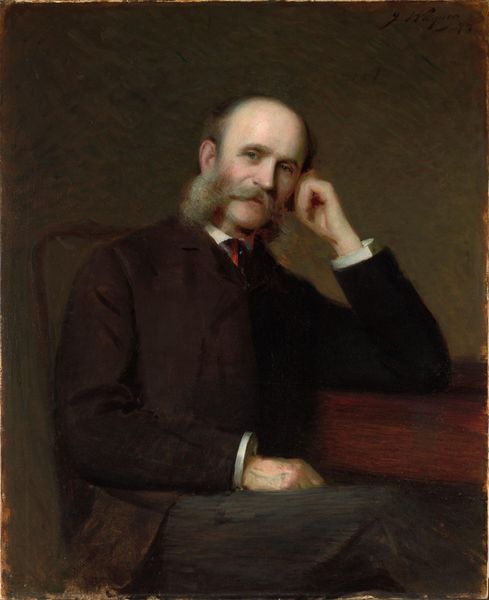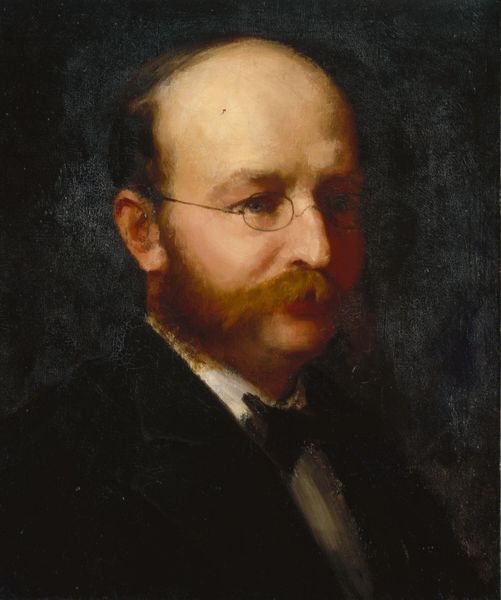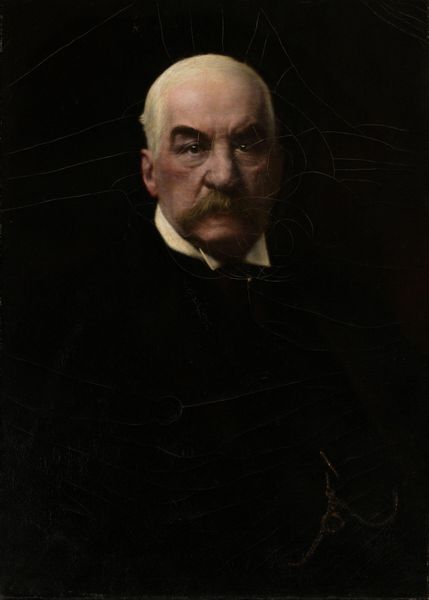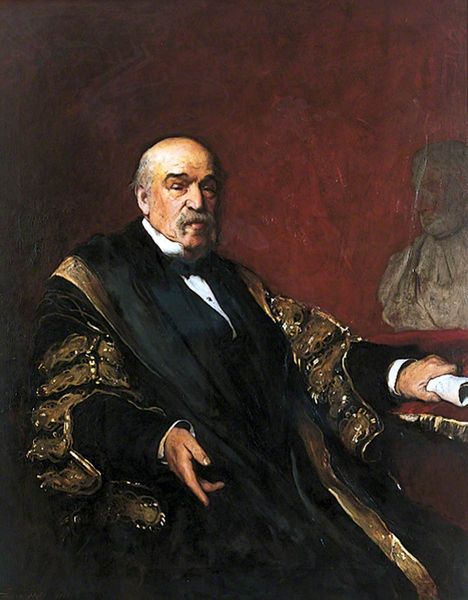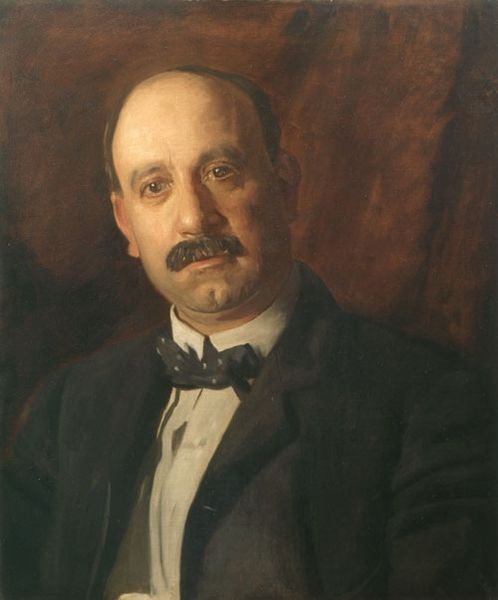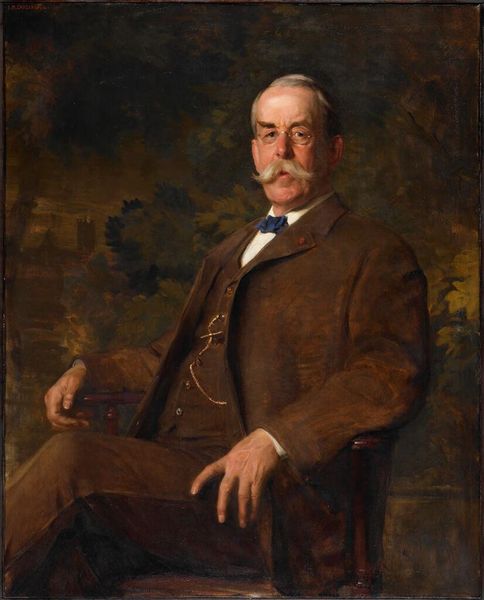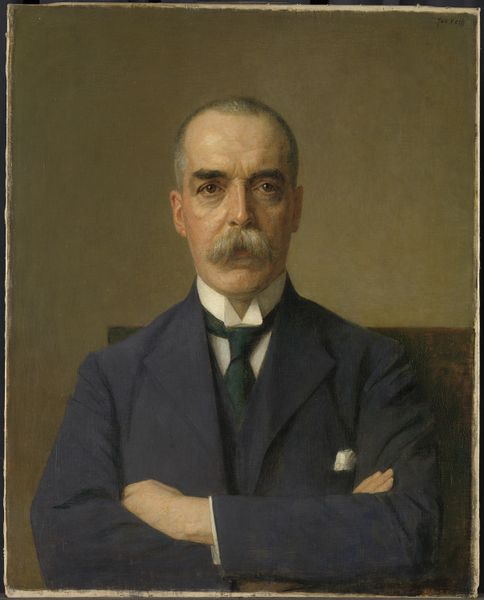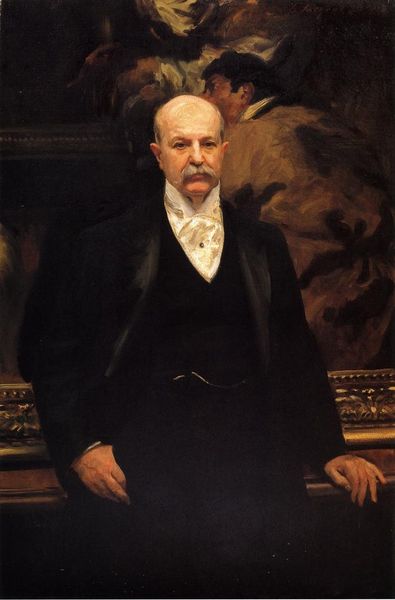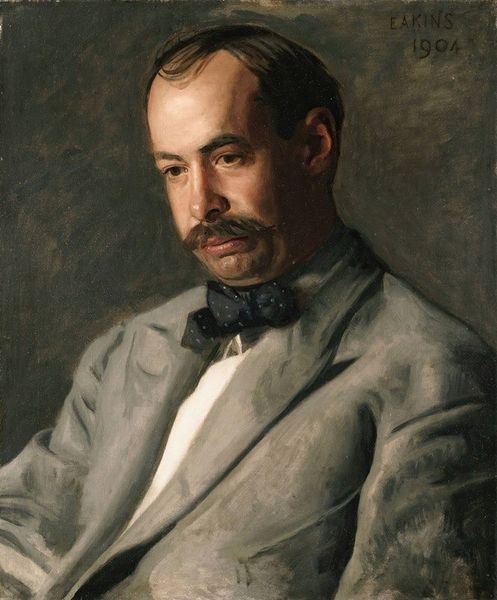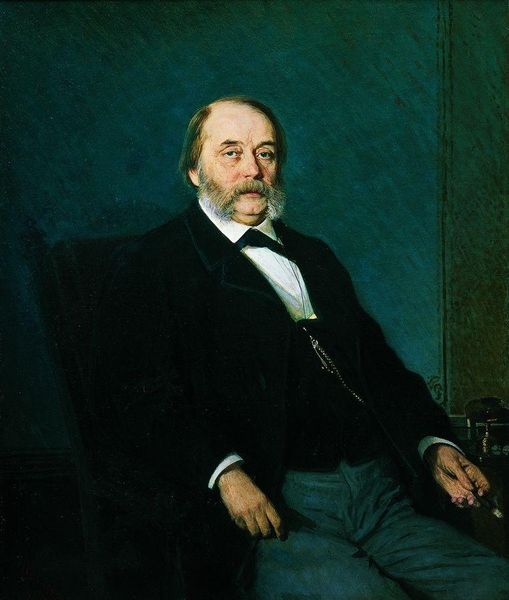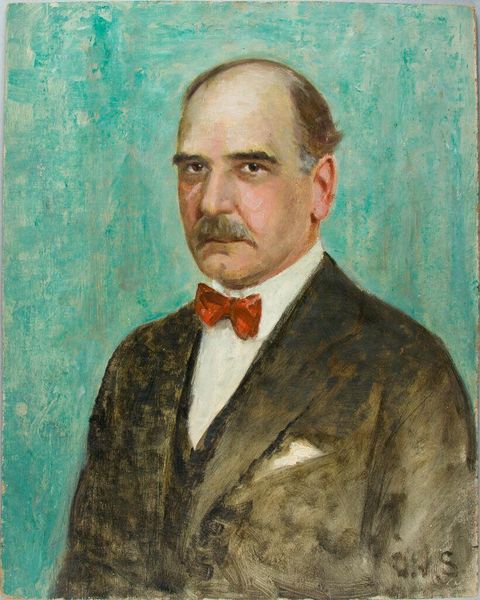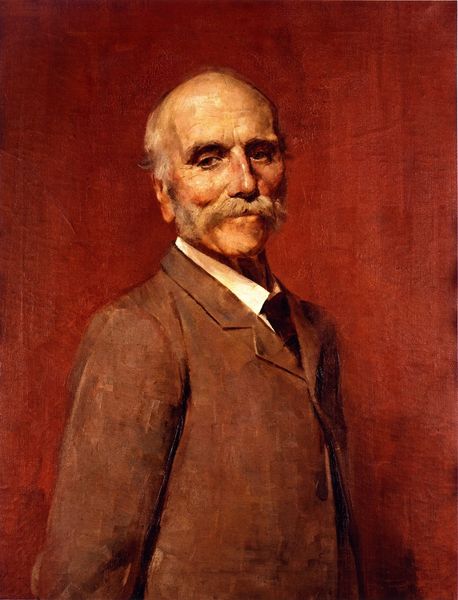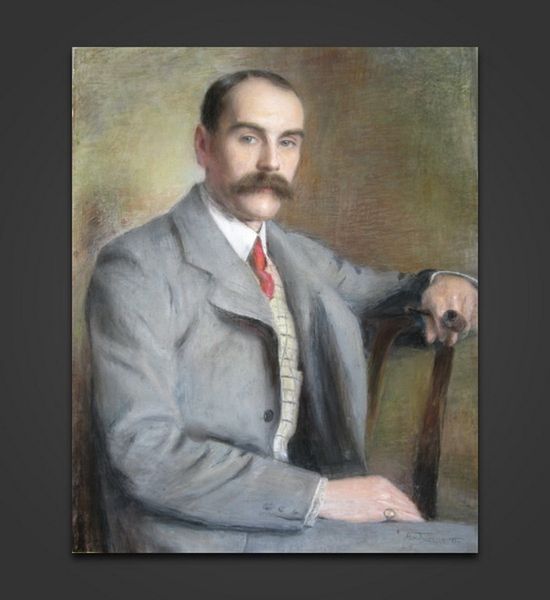
#
low key portrait
#
portrait image
#
portrait
#
portrait subject
#
portrait reference
#
facial portrait
#
portrait art
#
fine art portrait
#
celebrity portrait
#
digital portrait
Copyright: Public domain
Curator: This is Francis Davis Millet’s "Portrait of Charles Francis Adams, Jr.," completed in 1876. Editor: It exudes a sense of restrained power, doesn’t it? The tight composition, the dark suit against the rich, reddish backdrop – it focuses your attention intensely. Curator: Adams, a Civil War veteran, railroad regulator, and member of the prominent Adams family, wielded significant influence during the Gilded Age. Millet positions him squarely within a narrative of American power and progress, while simultaneously critiquing the exclusivity of that progress. Editor: The contrast between the stark white of his bow tie and vest and the deep black of his coat certainly commands attention, dividing the picture plane rather neatly. It almost creates a binary…but to what end? Curator: Precisely. This is where we might consider the fraught social landscape of Reconstruction. While ostensibly aimed at reconciliation, it cemented racial and economic hierarchies, creating vast inequalities. Adams, as part of the elite, benefited directly from this. Editor: You read it as a condemnation, then? I was seeing more of a…presentation. His face, in particular, seems designed to project authority through line and shading alone. Curator: It’s both. Millet understood his sitter's role in shaping America. His composed demeanor, his formal attire – these were carefully constructed facades that served a specific purpose, upholding an image of stability amidst upheaval. It speaks volumes about power dynamics during this tumultuous period. Editor: The muted palette keeps the viewer at a distance. And even the red backdrop, although lush, is strangely subdued – a fascinating study in value contrast. Curator: Viewing it through a contemporary lens allows us to scrutinize not just the man, but the structures that enabled his success and the inherent exclusions built into the American dream. Editor: I see now how you situate the work within its specific historical context. It deepens my understanding of the portrait, transforming it into a broader commentary about societal structures.
Comments
No comments
Be the first to comment and join the conversation on the ultimate creative platform.
